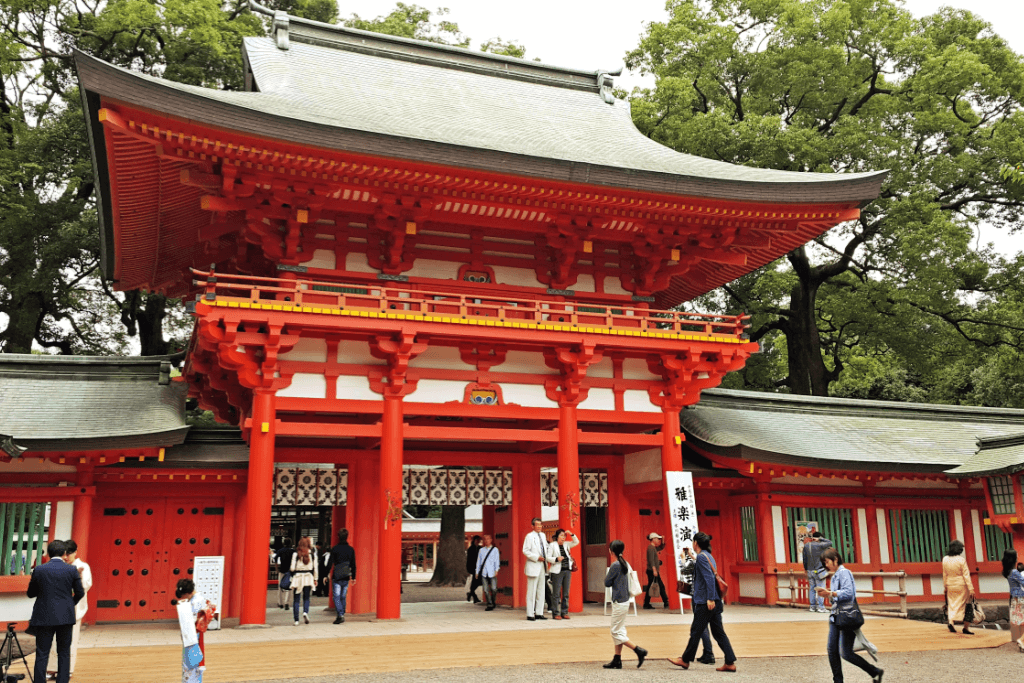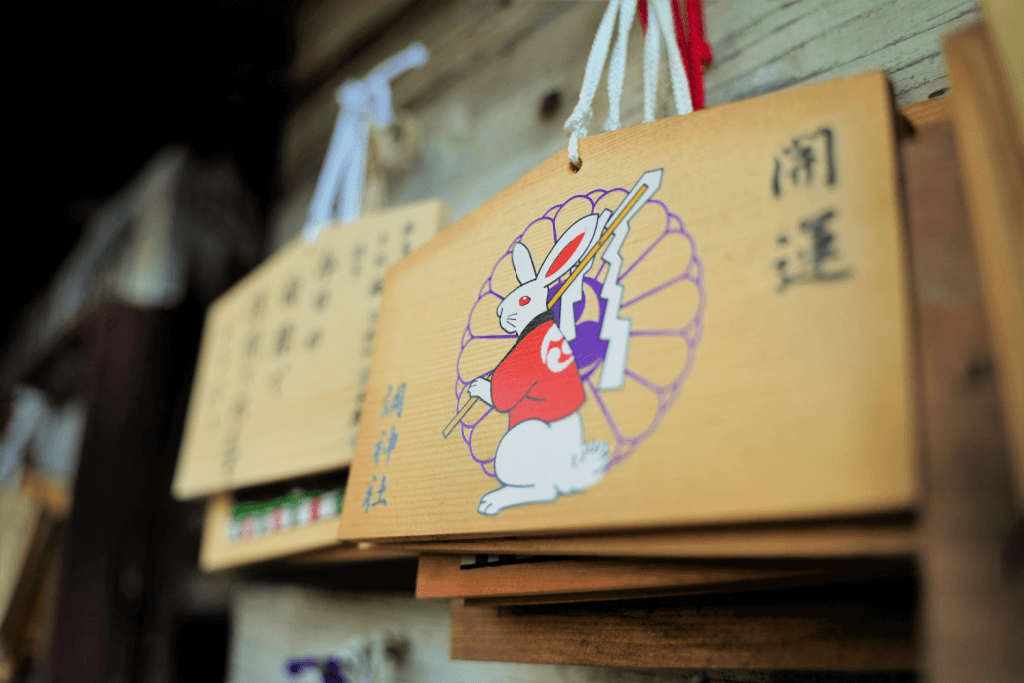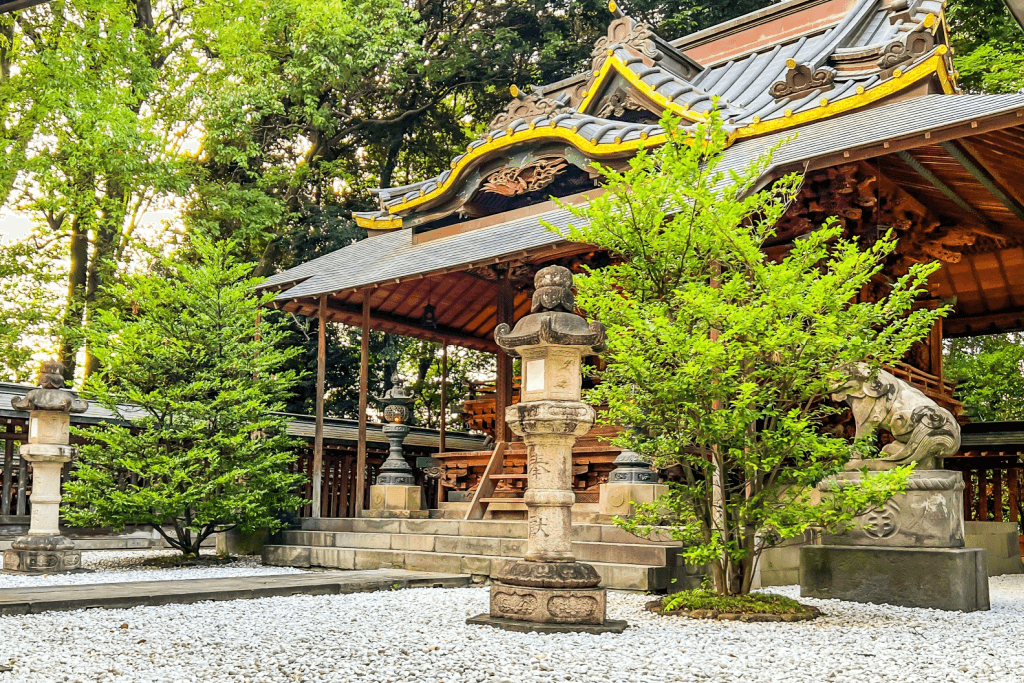musashi, shinto shrine
Musashi Ichinomiya and More: Three Shrines in Saitama!

Devon Lord-Moncrief
Posted on October 26, 2023
Share:

The Musashi Ichinomiya Hikawa Shrine is one of countless Shinto shrines throughout Japan. With roughly 100,000 Shinto shrines across the country, the cultural and spiritual importance of Shinto shrines are as significant in Japan as they were hundreds of years ago. Shinto shrines are spiritual places in Japan serving locations where various spirits known as kami dwell.
Visitors to shrines pay their respects to the kami they are visiting, make offerings, and perform a small rite. This tradition continues today as people seek aid and guidance in their lives. If 100,000 Shinto shrines seem overwhelming, here are three shrines in Saitama City that you can explore! These shrines vary in size and historical significance, each holding unique importance. Each shrine is unique and valuable, so offer the utmost respect when visiting!
Musashi Ichinomiya Hikawa Shrine
Musashi Ichinomiya Hikawa Shrine is one of Japan’s most significant Hikawa shrines, known for its historical importance and spiritual resonance. Situated close to Omiya Station, this shrine welcomes visitors from various corners of Japan and beyond, rendering it easily accessible.
In ancient times, this was a vital site, the primary shrine of Musashi Province. This area corresponds to modern Greater Tokyo. Within, it honors Susanoo, a significant Shinto deity, the god of the sea and storms.

Throughout the year, the shrine emanates a serene atmosphere, offering a sanctuary for reflection and spiritual connection. However, this peaceful aura undergoes a dynamic transformation during certain occasions, notably during the festive New Year’s celebrations.
During this time of year, the shrine bustles with life and fervor as visitors gather to mark the transition into the new year with prayers, offerings, and a vibrant sense of community. Overall, Musashi Ichinomiya Hikawa Shrine is culturally significant with deep traditions. It’s easily accessible for curious travelers exploring Japan’s spiritual heritage.
Issan Shrine
Located in Chuo Ward, the Issan Shrine is essential as the Toji-Sai Festival is held during the winter solstice. The winter solstice is the day each year when daylight is the shortest and night is the longest. For some, this may seem like a day to avoid, but it is a day of celebration in Japan.
At home, tossing a few yuzu fruits into baths during the winter solstice is a gesture believed to bring good fortune and ward off bad luck. Meanwhile, a more communal and symbolic celebration occurs at the Issan Shrine. Here, a significant event involves the creation of a large bonfire. This bonfire serves as the centerpiece for a special ritual.

During the ritual, priests make a path through the center of the fiery blaze. People then have the opportunity to walk barefoot along this path, an act that is might cleanse them of impurities from the past year. According to legend, they’ll get a fresh start as they embrace the returning light and warmth of the yang energy.
Are you looking for some delicious snacks to enjoy while visiting Saitama City? Check out Sakuraco! Sakuraco delivers traditional Japanese snacks, teas, sweets, and snacks from local Japanese makers directly to your door so you can enjoy the latest treats directly from Japan!
Tsuki Shrine
For several reasons, Tsuki Shrine is a unique shrine in Urawa. First, unlike many other shrines, Tsuki Shrine does not have komainu statues erected at its entrance. At Tsuki Shrine, giant stone statues of rabbits replace the traditional komainu. They are large lion-dogs guarding shrine entrance gates. The shrine initially served as a storehouse for tributes known as chomomo, and over time, the alternative pronunciation of the kanji for ‘cho’ became associated with ‘tsuki,’ which means ‘moon.’

As rabbits are connected deeply with the moon, the shrine was eventually called Tsuki Shrine. The shrine also lacks any pine trees, a very uncommon feature among shrines in Japan. Finally, Tsuki Shrine removed its torii arches many years ago to simplify the transportation of items to the storehouse. Tsuki Shrine holds significant historical importance and symbolizes luck, making it a popular place where athletes offer prayers before their performances.
Why should I visit shrines in Saitama like Musashi Ichinomiya Hikawa?
Shinto shrines in Japan serve multiple purposes. They act, first and foremost, as places of worship, helping bridge the practices of the past into today’s modern world. Additionally, they’re places of community where people from all over Japan travel to engage with the culture surrounding each respective shrine. They also serve as pieces of living history, places that draw in practicing worshipers and tourists who wish to learn more about Japan’s fascinating spiritual history.

These are only the tiniest fraction of the total number of shrines in Japan, but they are great places for those looking to take their first trips to Japan. Have you visited these shrines in Saitama? Have you visited any other shrines in Japan? If so, what was your experience like? Please tell us in the comments! We’d love to hear from you!

Discover authentic flavors with Sakuraco
Get Sakuraco 

Discover authentic flavors with Sakuraco
Get Sakuraco 
Related Articles

Mount Fuji Snacks That You Need to Try This Summer!
Mount Fuji, Japan’s highest and most iconic peak, has long served as a muse not just for artists and poets, but also for confectioners. Its symmetry and snow-capped grandeur make it an ideal motif for culinary artisans nationwide. These treats capture the spirit of Fuji in edible form, reflecting regional ingredients, seasonal symbolism, and time-honored techniques.

Okinawa City is Home to Southeast Botanical Gardens!
The Southeast Botanical Gardens in Okinawa are one of the island’s most beautiful and relaxing destinations. In Okinawa City, they offer a lush escape filled with tropical plants, ponds, animals, and seasonal displays.

Mount Fuji Tour: Great Adventures Await You This Summer!
Mount Fuji is one of the most famous landmarks in Japan. People worldwide visit to see its beauty and enjoy exciting yearly outdoor activities!

Mikoshi: Why Are These Portable Shrines So Important?
Japan’s summer festivals are known for their energy, color, and tradition. And at the heart of many lies the mikoshi.



